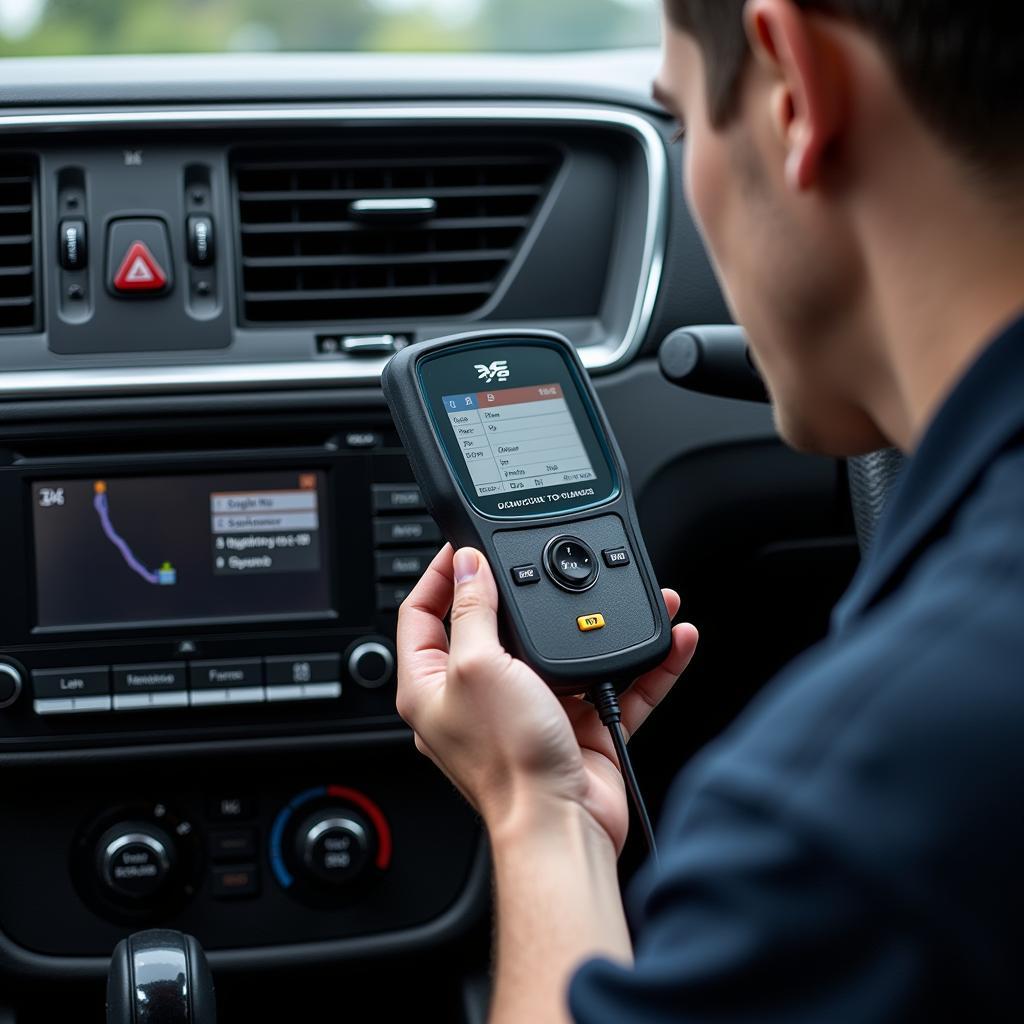The front assist warning light on your Seat is a crucial part of your car’s safety system. When illuminated, it typically signals an issue with the front assist system, which is designed to help prevent or mitigate frontal collisions. This article will delve into the common causes of this warning light, how to diagnose the problem, and what steps you can take to get it fixed.
Understanding Your Seat’s Front Assist System
Before we address troubleshooting, let’s clarify what the front assist system does. Utilizing sensors located at the front of your vehicle, the system constantly monitors the distance to vehicles ahead. If it detects a potential collision, it alerts the driver and can even apply the brakes automatically to avoid or lessen the impact.
Common Causes of the Front Assist Warning Light
A glowing front assist warning light can stem from various issues, ranging from minor sensor obstructions to more complex software glitches. Here are some of the most common culprits:
- Dirty or Obstructed Sensors: The front assist sensors are sensitive and can be affected by dirt, debris, snow, or ice buildup. Even a minor obstruction can hinder their functionality, triggering the warning light.
- Adverse Weather Conditions: Heavy rain, fog, or snow can interfere with the sensors’ ability to accurately judge distances, leading to a false warning.
- System Malfunction: Like any electronic system, the front assist system can experience malfunctions. This could be due to a faulty sensor, wiring issues, or software problems.
- Low Battery Voltage: In some cases, a low battery voltage can cause the front assist system to malfunction and trigger the warning light.
- Aftermarket Modifications: Modifications to the front of your car, such as installing a bull bar or changing the grille, can obstruct the sensors and trigger the warning light.
Diagnosing the Issue
Determining the exact cause of the front assist warning light often requires diagnostic tools. However, you can perform some basic checks before heading to a mechanic:
- Visually Inspect the Sensors: Check the front of your car for any visible obstructions on the sensors. Gently clean them with a soft cloth if they appear dirty.
- Check Your Battery: Ensure your car battery is adequately charged. A weak battery can cause erratic behavior in various electronic systems, including the front assist.
- Consult Your Owner’s Manual: Your Seat’s owner’s manual contains valuable information about the front assist system, including troubleshooting tips.
When to Seek Professional Help
If the warning light persists despite these initial checks, it’s essential to seek professional help. A qualified mechanic specializing in Seat vehicles can use diagnostic equipment to pinpoint the root cause of the problem.
 Seat Diagnostic Scan Tool
Seat Diagnostic Scan Tool
Remote Diagnostic and Programming Solutions
In today’s digital age, remote diagnostics and programming services are becoming increasingly popular. These services allow technicians to access your car’s computer system remotely, diagnose issues, and even install software updates without physically being present. This can save you time and money, especially if the issue is software-related.
“Remote diagnostics played a crucial role in fixing a recent front assist issue on a client’s Seat Ateca,” says John Smith, Senior Automotive Technician at XYZ Auto Services. “The problem turned out to be a software glitch that we were able to resolve remotely, saving the client a trip to the workshop.”
Preventing Future Issues
While not all front assist problems are preventable, some proactive measures can help keep your system running smoothly:
- Regular Cleaning: Make it a habit to clean your car’s sensors regularly, especially during winter or after driving on dusty roads.
- Timely Service: Adhering to your Seat’s recommended service schedule ensures that all systems, including the front assist, are checked and maintained properly.
- Be Mindful of Modifications: If you’re considering any aftermarket modifications to the front of your car, consult your dealer or a qualified mechanic to ensure they won’t interfere with the front assist sensors.
Conclusion
The front assist warning light on your Seat is a critical safety feature that should never be ignored. While minor issues like sensor obstructions can often be resolved with simple cleaning, persistent warnings necessitate professional attention. By understanding the common causes, knowing how to diagnose the problem, and seeking expert help when needed, you can help ensure the optimal performance of your Seat’s front assist system and, most importantly, your safety on the road.
FAQs
1. Can I continue driving with the front assist warning light on?
It’s not advisable. While you may still be able to drive, the front assist system might not function correctly, increasing the risk of a collision.
2. How much does it cost to fix a front assist problem?
The cost varies depending on the underlying cause. Simple cleaning might be inexpensive, while sensor replacement or software issues could be more costly.
3. Is the front assist system covered under warranty?
This depends on your specific warranty coverage and the age and mileage of your vehicle. Check your warranty documentation or contact your dealer for details.
4. Can I disable the front assist system?
While technically possible, disabling safety features like front assist is strongly discouraged. These systems are designed to protect you and other road users.
5. How can I find a qualified mechanic specializing in Seat vehicles?
You can search online for certified Seat repair shops in your area. Check online reviews and ratings to find a reputable mechanic.
